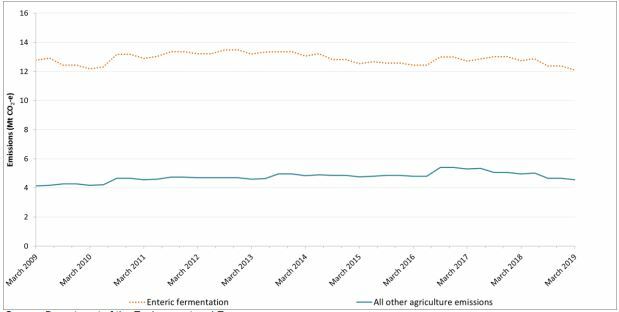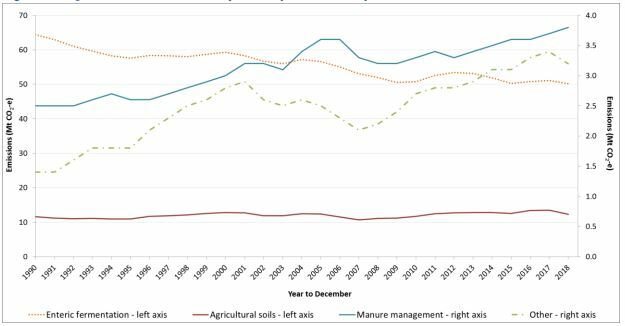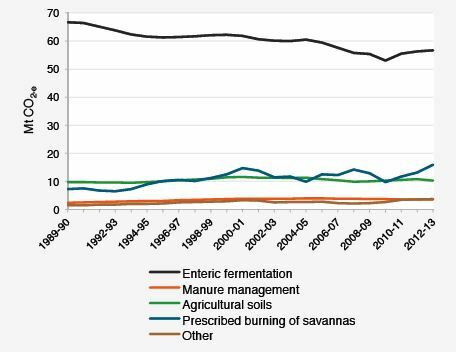The agricultural sector is an important source of emissions in Australia (Box 2.2). Part of carbon farming involves activities that avoid emissions on the farm, preventing greenhouse gas emissions from entering the atmosphere. Emissions avoidance generates abatement by reducing or avoiding emissions, most of which are methane and nitrous oxide, or by converting methane into CO2 through combustion.
Table 2.2 summarises emissions avoidance activities on the positive list of the CFI.
|
|
Table 2.2: Emissions avoidance activities on the positive list |
|
|
|
Activity |
|
|
|
|
Box 2.2: Australia's agricultural emissions |
|
There are six broad components of agricultural emissions:
In June 2020, agriculture accounted for 13.1 per cent of Australia's national inventory, approximately 3.5% higher than the 1990 levels.The following charts, from the "Quarterly Update of Australia's National Greenhouse Gas Inventory" by the Department of Industry, Science, Energy and Resources, show the history and composition of Australia's agricultural emissions, as well as changes to the reporting style and level of detail offered by the Department.
June 2020 chart:
March 2019 chart:
December 2018 chart:
March 2014 chart:
|
||
Source: Department of the Environment, Quarterly update of Australia's National greenhouse gas inventory
|
Explore the full Workshop Manual: The business case for carbon farming: improving your farm’s sustainability (January 2021)
Read the report
RESEARCH REPORTS
1. Introduction: background to the business case
This chapter lays out the basic background and groundwork of the manual
RESEARCH REPORTS
1.2 Being clear about the reasons for participating
Introduction: background to the business case
RESEARCH REPORTS
1.4 Working through the business case for carbon farming
Introduction: background to the business case
RESEARCH REPORTS
1.5 Factors determining project economics
Introduction: background to the business case
RESEARCH REPORTS
1.8 Important features of the business case
Introduction: background to the business case
RESEARCH REPORTS
2. How carbon is farmed under the ERF
This chapter considers in detail the activities that constitute carbon farming
RESEARCH REPORTS
2.5 Carbon farming under the Emissions Reduction Fund
How carbon is farmed under the ERF
RESEARCH REPORTS
3. The policy context and the price of ACCUs
This chapter takes a broad look at the policy context for carbon farming



























